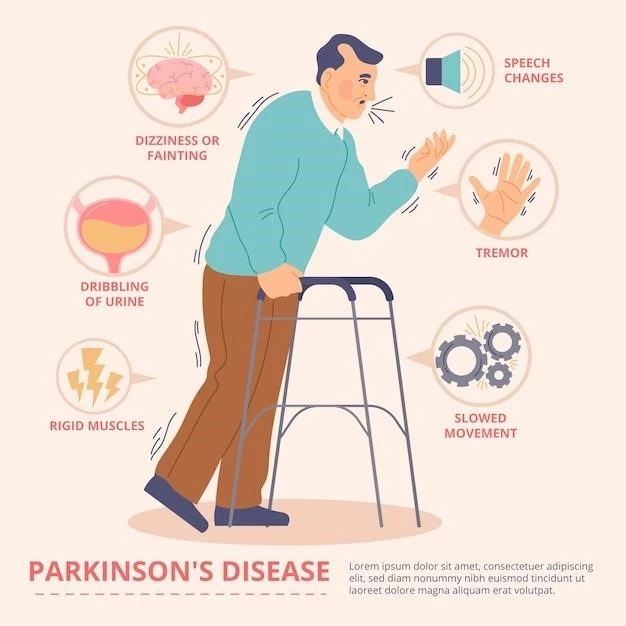Disease Overview of Dincsoy–Salih–Patel Syndrome
Dincsoy–Salih–Patel syndrome is a rare disease characterized by developmental delay, intellectual disability, distinct facial features, hearing loss, vision problems, and abnormal MRI findings. The genetics involve mutations in specific genes. Genetic testing aids in diagnosis, and treatment options focus on managing symptoms.
Introduction
Dincsoy–Salih–Patel syndrome, a rare disease, was first described in the early 2000s. This syndrome presents with a combination of developmental delay, intellectual disability, distinct facial features, hearing loss, vision problems, and abnormal MRI findings. The genetic basis of the disorder involves mutations in specific genes. Patients typically exhibit delayed milestones and cognitive impairment. Facial features often include a prominent forehead, widely spaced eyes, a flat nasal bridge, and a small chin. Hearing loss and vision problems are common manifestations of the syndrome. MRI findings may show abnormalities in the brain structure. Genetic testing plays a crucial role in confirming the diagnosis of Dincsoy–Salih–Patel syndrome. Although there is no cure for this condition, various treatment options are available to manage symptoms and improve the quality of life for affected individuals. Ongoing research aims to further understand the underlying mechanisms of the syndrome and develop potential therapies to address its diverse symptoms.
Symptoms of Dincsoy–Salih–Patel Syndrome
Individuals with Dincsoy–Salih–Patel syndrome commonly experience a range of symptoms. These include developmental delay, characterized by delayed attainment of milestones such as sitting, crawling, and walking. Intellectual disability is a hallmark feature, affecting cognitive function and adaptive skills. Distinct facial features are often present, including a prominent forehead, widely spaced eyes, a flat nasal bridge, and a small chin.
Hearing loss is a prevalent symptom in affected individuals, with varying degrees of severity. Vision problems, such as refractive errors or structural abnormalities of the eyes, may also be observed. Some patients exhibit abnormalities in their MRI findings, which can show structural variations in the brain. These symptoms collectively contribute to the clinical presentation of Dincsoy–Salih–Patel syndrome and aid in its diagnosis.
Genetics of Dincsoy–Salih–Patel Syndrome
Dincsoy–Salih–Patel syndrome is primarily caused by genetic mutations. The syndrome follows an autosomal recessive pattern of inheritance, meaning that an individual must inherit two copies of the mutated gene (one from each parent) to develop the condition. The specific genes involved in this syndrome have been identified through genetic research.
These genes play critical roles in various biological processes, and mutations in them can lead to the characteristic features of the syndrome. Understanding the genetic basis of Dincsoy–Salih–Patel syndrome is essential for accurate diagnosis and genetic counseling. Genetic testing can help confirm the presence of mutations in the associated genes, providing valuable information for healthcare providers and families.
Mutations Associated with Dincsoy–Salih–Patel Syndrome
The genetic mutations linked to Dincsoy-Salih-Patel syndrome affect specific genes crucial for normal development and function. These mutations disrupt the gene’s normal activity, leading to the various symptoms seen in individuals with the syndrome. Researchers have identified key genes implicated in this condition through genetic studies and molecular analysis.
It is believed that these gene mutations interfere with essential biological processes, impacting brain development, facial features, hearing, and vision. The identification of these mutations is vital for diagnosing Dincsoy-Salih-Patel syndrome accurately. Genetic testing helps healthcare professionals confirm the presence of these mutations in affected individuals, guiding treatment strategies and enhancing understanding of the underlying genetic mechanisms driving the syndrome.
Developmental Delay and Intellectual Disability
Developmental delay and intellectual disability are prominent features of Dincsoy-Salih-Patel syndrome. Children with this syndrome often experience delays in reaching developmental milestones such as sitting up, crawling, walking, and speaking. The delay in these milestones can be a significant early indicator of the condition.
Intellectual disability associated with the syndrome affects cognitive abilities, learning, problem-solving, and adaptive functioning. Individuals may have challenges with memory, attention, and decision-making skills. The degree of intellectual disability can vary among affected individuals, influencing their educational needs and daily living skills.
Early interventions, such as speech therapy, occupational therapy, and educational support, play a crucial role in helping individuals with Dincsoy-Salih-Patel syndrome reach their full potential. Multidisciplinary care teams often work together to provide tailored interventions that address the specific developmental and intellectual needs of each individual affected by the syndrome.
Facial Features in Dincsoy–Salih–Patel Syndrome
Distinct facial features are characteristic of Dincsoy-Salih-Patel syndrome and can aid in the clinical diagnosis of the condition. Individuals with this syndrome may exhibit a unique facial appearance that includes a prominent forehead, widely spaced eyes (hypertelorism), a flat nasal bridge, a small chin (micrognathia), and overall facial asymmetry.
The combination of these facial characteristics gives individuals with Dincsoy-Salih-Patel syndrome a recognizable appearance. These features can vary in severity and may become more noticeable with age. Healthcare providers and genetic specialists often use the presence of these facial features as part of the diagnostic criteria for the syndrome.
While the facial features associated with Dincsoy-Salih-Patel syndrome are distinctive, they do not impact an individual’s overall health or physical well-being. However, these features, along with other symptoms of the syndrome, can provide valuable clues for healthcare professionals during the diagnostic process and when considering appropriate medical management and support for affected individuals.
Hearing Loss and Vision Problems
Hearing loss and vision problems are common manifestations of Dincsoy-Salih-Patel syndrome. Individuals with this syndrome may experience varying degrees of hearing impairment, ranging from mild to profound. The hearing loss can affect one or both ears and may require interventions such as hearing aids or cochlear implants to improve communication abilities.
In addition to hearing issues, individuals with Dincsoy-Salih-Patel syndrome may also face vision problems. These problems can include refractive errors, structural abnormalities of the eyes, or other visual impairments. Regular eye examinations and consultations with ophthalmologists are essential to monitor and address any vision concerns that may arise.
Understanding and managing hearing loss and vision problems in individuals with Dincsoy-Salih-Patel syndrome are crucial aspects of their overall care. Collaborative efforts between audiologists, otolaryngologists, ophthalmologists, and other healthcare providers can help optimize interventions and support to enhance the quality of life for affected individuals.
MRI Findings in Dincsoy–Salih–Patel Syndrome
MRI findings play a significant role in the assessment and diagnosis of Dincsoy-Salih-Patel syndrome. Imaging studies of the brain using MRI (magnetic resonance imaging) can reveal structural abnormalities that may be associated with the syndrome. These abnormalities can vary among affected individuals and may provide insights into the underlying neurological characteristics of the condition.
Common MRI findings in individuals with Dincsoy-Salih-Patel syndrome may include changes in brain structure, such as abnormalities in the cortical development, white matter changes, or alterations in specific regions of the brain. These findings can help healthcare providers understand the neurological implications of the syndrome and tailor management strategies accordingly.
Interpreting MRI findings in the context of an individual’s clinical presentation and genetic profile is essential for a comprehensive understanding of Dincsoy-Salih-Patel syndrome. Radiologists, neurologists, and other specialists work collaboratively to analyze MRI results, guide diagnostic evaluations, and formulate targeted interventions to address both the neurological aspects and overall well-being of individuals affected by the syndrome.
Genetic Testing for Dincsoy–Salih–Patel Syndrome
Genetic testing plays a crucial role in the diagnosis and management of Dincsoy-Salih-Patel syndrome. Through genetic testing, healthcare providers can identify specific mutations in the genes associated with the syndrome, confirming the genetic basis of the condition.
There are various genetic testing methods used to analyze the genes known to be linked to Dincsoy-Salih-Patel syndrome. These methods may include targeted genetic sequencing, whole exome sequencing, or other advanced molecular techniques. The results of genetic testing can provide valuable information for healthcare providers, affected individuals, and their families.
Genetic testing also plays a vital role in genetic counseling, helping individuals understand the inheritance pattern of the syndrome and the potential risk of passing the condition to future generations. By offering genetic testing and counseling services, healthcare providers can support informed decision-making and provide guidance on reproductive options for families affected by Dincsoy-Salih-Patel syndrome.
Diagnosis of Dincsoy–Salih–Patel Syndrome
The diagnosis of Dincsoy–Salih–Patel syndrome involves a comprehensive evaluation that considers the individual’s clinical symptoms, genetic testing results, imaging studies, and developmental assessments. A healthcare provider, often a clinical geneticist or a pediatrician, may suspect the syndrome based on the characteristic features present in the individual.
Genetic testing is a key component of the diagnostic process, as identifying mutations in the genes associated with the syndrome can confirm the presence of Dincsoy–Salih–Patel syndrome. Additionally, imaging studies such as MRI can reveal brain abnormalities that are consistent with the syndrome.
The diagnostic journey may involve collaboration among various specialists, including genetic counselors, neurologists, audiologists, and ophthalmologists, to comprehensively assess the individual’s health and development. The collective expertise of these professionals helps ensure an accurate diagnosis and guides the development of a tailored care plan for individuals affected by Dincsoy–Salih–Patel syndrome.
Treatment Options for Dincsoy–Salih–Patel Syndrome

While there is no specific cure for Dincsoy–Salih–Patel syndrome, treatment focuses on managing the symptoms and optimizing the individual’s overall quality of life. Multidisciplinary care teams, comprising various healthcare professionals, work together to provide comprehensive care tailored to the specific needs of each individual affected by the syndrome.
Interventions may include early developmental interventions, such as physical therapy, occupational therapy, and speech therapy, to support motor skills, communication abilities, and cognitive development. Educational support tailored to the individual’s learning style can help enhance academic progress and adaptive skills.
For individuals with hearing loss, interventions like hearing aids or cochlear implants may be recommended to improve communication abilities. Regular screenings and interventions for vision problems can help maintain optimal eye health and visual function. Additionally, supportive services and resources, including counseling and community support groups, can offer emotional and social support for affected individuals and their families.
Research into potential therapeutic interventions continues to explore new treatment strategies and approaches to address the diverse symptoms of Dincsoy–Salih–Patel syndrome. By combining traditional therapies with emerging research findings, healthcare providers strive to enhance the care and well-being of individuals affected by this rare genetic disorder.
Research and Future Directions
Ongoing research on Dincsoy–Salih–Patel syndrome aims to deepen our understanding of the underlying genetic mechanisms, disease progression, and potential treatment options. Researchers are investigating the specific gene mutations associated with the syndrome and their effects on various biological pathways.
Future research directions may focus on developing targeted therapies that address the neurological, developmental, and sensory aspects of the syndrome. This includes exploring pharmacological interventions, gene therapy approaches, and behavioral therapies to improve outcomes and quality of life for individuals with Dincsoy–Salih–Patel syndrome.
Collaboration among researchers, clinicians, advocacy groups, and affected individuals and their families is vital in advancing the field of Dincsoy–Salih–Patel syndrome research. By sharing knowledge, resources, and insights, the scientific community can work towards improved diagnostic techniques, more effective treatments, and ultimately, better support for individuals living with this rare genetic disorder.
Conclusion
In conclusion, Dincsoy–Salih–Patel syndrome is a rare genetic disorder characterized by developmental delay, intellectual disability, distinct facial features, hearing loss, vision problems, and abnormal MRI findings. The genetics of the syndrome involve specific gene mutations identified through genetic testing.
While there is no cure for Dincsoy–Salih–Patel syndrome, treatment options focus on managing symptoms and enhancing the individual’s quality of life. Early interventions, multidisciplinary care teams, and supportive services play essential roles in addressing the diverse needs of affected individuals.
Ongoing research efforts aim to uncover new insights into the syndrome, paving the way for future therapeutic advancements and improved clinical care. By continuing to investigate the genetic underpinnings and potential treatment strategies, the medical community strives to enhance outcomes and support for individuals and families impacted by Dincsoy–Salih–Patel syndrome.
